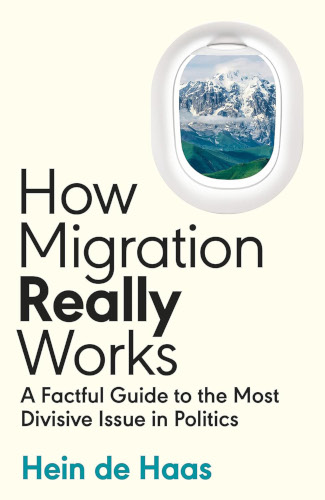The day before the local elections in England, the UK government announced that it had started rounding up asylum-seekers and would ‘detain’ them pending their deportation to Rwanda later this year.
The prime minister’s press secretary denied that this was a cynical move to increase Conservative votes in the elections, claiming that: ‘For our part, there really is not a day to lose when people are dying in the Channel.’
Crocodile tears and detention of asylum-seekers notwithstanding, the Conservatives crashed and burned in the elections, losing almost 500 local councillors.
Perhaps prime minister Rishi Sunak should have read Hein de Haas’s ‘factful guide’ to migration before he issued the order for immigration officials to knock down the doors of asylum-seekers around the country.
If he had, he might have realised that getting tough on immigration is not necessarily the vote-winner he clearly thinks it is.
This is a fascinating book, written by a Dutch professor who spent nine years co-directing the International Migration Institute at the University of Oxford.
De Haas looks at no fewer than 22 myths about migration, steadily picking apart what we think we know – and what we are constantly told by government ministers – about the issue. Migration is at an all time high – isn’t it? Our borders are out of control – aren’t they? Public opinion has turned against migration – hasn’t it?
It turns out that when you actually look at the facts (as opposed to making them up), the situation appears very different.
International migrants make up around three percent of the world’s population, a figure that has remained stable for decades, while refugees make up just 0.3 percent of the world’s population, with the vast majority of them staying in their region of origin.
And while governments want us to think that borders are out of control, the reality is that the vast majority of immigrants arrive legally, ‘visas and passports in hand’ as de Haas puts it.
They come to work, a fact the government prefers to keep quiet about, preferring that the public sees migrants as a ‘swarm’ (then-prime minister David Cameron, 2015) or an ‘existential challenge’ (then-home secretary Suella Braverman, 2023). They do this, de Haas says, in order to ‘present themselves as strong leaders fighting against a fabricated external enemy’.
But do people really see immigrants as the enemy?
The book cites an Ipsos MORI survey which found that while 64 percent of British respondents were negative about the impacts of immigration in 2011, this had dropped to 28 percent by 2018.
Views on immigration, de Haas says, are far more nuanced than governments would have us believe. Most people see pros and cons in immigration, and negative views are reduced when people actually have contact with immigrants – note the huge votes for Brexit in the whitest parts of the UK, and the strong vote against it in London with its huge multicultural population.Immigration is a complicated issue and reducing it to soundbites is unhelpful and distracting.
We’re in a general election year and both main parties are desperate not to be seen as soft on immigration.
The Conservatives are praying they’ll manage to get some asylum-seekers on a plane to Rwanda before they are forced to call an election. Labour’s opposition to the Rwanda plan is merely that it is ‘unworkable’ – they have not a word to say about it being unspeakably cruel, not to mention illegal in international law.
Given how toxic this issue has become, and how much we are being lied to about it by government and the media, it’s critical that we familiarise ourselves with the facts.
This book is a great place to start.


